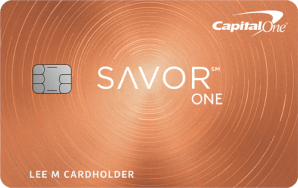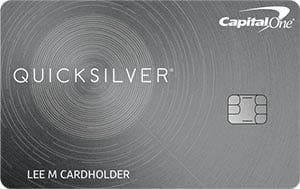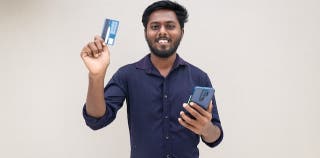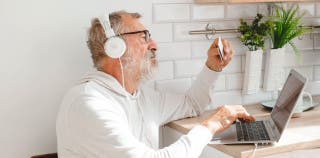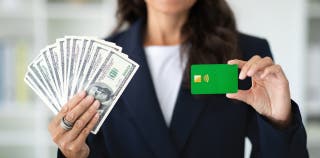- Some of our picks for the best balance transfer credit cards of 2024 are the Blue Cash Everyday® Card from American Express, Chase Freedom Unlimited®, and the Wells Fargo Reflect Card.
- Balance transfers work by moving the remaining balance from one card to another. Transferring your existing debt to a balance transfer card allows you to pay off your debt at a reduced interest rate by taking advantage of the 0% introductory APR on the new credit card.
On This Page
- Key takeaways
- Our picks for the best balance transfer credit cards
- Let's compare the best balance transfer cards of July 2024
- Best balance transfer credit cards of 2024: Editorial reviews
- What you need to know about balance transfers
- How to do a credit card balance transfer
- Pros and cons of balance transfer cards
- Reasons to get a balance transfer card
- How to choose a balance transfer card
- Alternatives to balance transfer credit cards
- How we selected our top balance transfer credit cards
- Best balance transfer credit cards FAQ
- Recommended articles
On This Page
- Key takeaways
- Our picks for the best balance transfer credit cards
- Let's compare the best balance transfer cards of July 2024
- Best balance transfer credit cards of 2024: Editorial reviews
- What you need to know about balance transfers
- How to do a credit card balance transfer
- Pros and cons of balance transfer cards
- Reasons to get a balance transfer card
- How to choose a balance transfer card
- Alternatives to balance transfer credit cards
- How we selected our top balance transfer credit cards
- Best balance transfer credit cards FAQ
- Recommended articles
Best Balance Transfer Credit Cards with 0% APR of 2024
Our top picks for the best balance transfer credit cards
- Blue Cash Everyday® Card from American Express: Best for Cash Back with No Annual Fee: 15 Month Intro APR Offer
- Chase Freedom Unlimited®: Best for Flexible Cash Back Rewards: 15 Month Intro APR Offer
- Blue Cash Preferred® Card from American Express: Best for Grocery & Gas Rewards: 12 Month Intro APR Offer
- Wells Fargo Reflect® Card: Best for a Long Intro APR Offer: 21 Months
- Capital One SavorOne Cash Rewards Credit Card: Best for Dining and Entertainment: 15 Month Intro APR Offer
- Wells Fargo Active Cash® Card: Best for Flat-Rate Cash Back (2%): 15 Month Intro APR Offer
- Capital One Quicksilver Cash Rewards Credit Card: Best for Flat-Rate Cash Back (1.5%): 15 Month Intro APR Offer
- Capital One VentureOne Rewards Credit Card: Best for Travel Rewards: 15 Month Intro APR Offer
Our picks for the best balance transfer credit cards
Best for Cash Back with No Annual Fee: 15 Month Intro APR Offer
Blue Cash Everyday® Card from American Express
Earn 3% cash back on up to $6,000/year spent at U.S. supermarkets (then 1%), 3% cash back on up to $6,000/year at U.S. gas stations (then 1%), 3% cash back on up to $6,000/year on online retail purchases (then 1%), and 1% cash back on all other eligible purchases. Cash back is received in the form of Reward Dollars that can be redeemed as a statement credit or at Amazon.com checkout.
Card Details
Balance Transfer Info & More
- 0% intro APR on purchases and balance transfers for 15 months after opening the account, then 19.24% to 29.99% variable APR applies.
- Cash Back is received as Reward Dollars which can be redeemed as a statement credit or at Amazon.com checkout.
- Get $7/month back in the form of a statement credit when you spend $9.99 or more per month on an eligible Disney Bundle subscription (Disney+, Hulu, and ESPN+). Subject to auto-renewal. Enrollment required.
- Receive up to $15 back per month when you purchase a Home Chef meal kit subscription. Subject to auto-renewal. Enrollment required.
- Terms Apply.
Pros
- No annual fee
- Various partner benefits
- Generous rewards at U.S. supermarkets, U.S. gas stations & online shopping
Cons
- Rewards cap on spending at U.S. supermarkets, U.S. gas stations, and online retail purchases
- 2.7% foreign transaction fee
- Low rewards rate outside of bonus categories
For a no-annual-fee option, the reward rate on this card is pretty solid, but for heavy spenders, other cards may offer more value.
Best for Flexible Cash Back Rewards: 15 Month Intro APR Offer
Chase Freedom Unlimited®
Enjoy 6.5% cash back on travel purchased through Chase Travel℠, 4.5% cash back on drugstore purchases and dining at restaurants, including takeout and eligible delivery services, and 3% on all other purchases (on up to $20,000 spent in the first year). After your first year or $20,000 spent, enjoy 5% cash back on travel purchased through Chase Travel℠, 3% cash back on drugstore purchases and dining at restaurants, including takeout and eligible delivery service, and 1.5% cash back on all other purchases.
Best for Grocery & Gas Rewards: 12 Month Intro APR Offer
Blue Cash Preferred® Card from American Express
Earn 6% cash back on up to $6,000 spent at U.S. supermarkets each year (then 1% back), 6% cash back on select U.S. streaming services, 3% cash back at U.S. gas stations and on transit, and 1% cash back on other eligible purchases. Cash back is received in the form of Reward Dollars that can be redeemed as a statement credit or at Amazon.com checkout.
Card Details
Balance Transfer Info & More
- 0% Intro APR for purchases and balance transfers for the first 12 months, then 19.24% to 29.99% variable applies.
- Cash Back is received as Reward Dollars which can be redeemed as a statement credit or at Amazon.com checkout.
- Get $7/month back in the form of a statement credit when you spend $9.99 or more per month on an eligible Disney Bundle subscription (Disney+, Hulu, and ESPN+). Subject to auto-renewal. Only valid in the U.S. Enrollment required.
- Terms Apply.
Pros
- Excellent rewards on spending at U.S. supermarkets, U.S. gas stations, transit and more
- 0% APR on purchases for a limited time
- Don’t need to activate categories
Cons
- Rewards can only be redeemed for a statement credit or at Amazon.com
- Charges foreign transaction fees
- Has an annual fee
Although this card has an annual fee, most families will be able to easily get enough value out of the everyday categories to make it worth it.
Best for a Long Intro APR Offer: 21 Months
Wells Fargo Reflect® Card
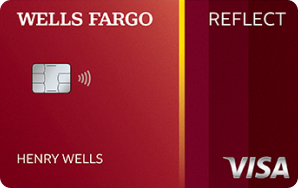
This card doesn’t earn any rewards.
Card Details
Balance Transfer Info & More
- INTRO APR OFFER: 0% intro APR for 21 months from account opening on purchases and qualifying balance transfers, then a variable APR of 18.24%, 24.74%, or 29.99%.
- Balance transfer fee: 3% for balance transfers made within 120 days, then 5% or $5, whichever is greater
- Benefit from up to $600 of cell phone protection against damage or theft. Subject to a $25 deductible.
- Access a 24/7 on-demand referral dispatch network that provides emergency roadside assistance, towing, or locksmith service when you need them.
- Get access to personalized deals from various merchants through My Wells Fargo Deals.
Pros
- Lengthy 0% APR offer
- No annual fee
- Cell phone protection
Cons
- Doesn’t earn rewards
- No welcome offer
- Requires good to excellent credit
This card’s main appeal is its long 0% APR offer, but it doesn’t give much past that point.
Best for Dining and Entertainment: 15 Month Intro APR Offer
Capital One SavorOne Cash Rewards Credit Card
Earn unlimited 3% cash back on dining, entertainment, popular streaming services and at grocery stores (excluding superstores like Walmart® and Target®), plus 1% back on all other purchases. Earn 8% cash back on Capital One Entertainment purchases when you book through the Capital One Entertainment portal. Earn 5% back on hotels and rental cars booked through Capital One Travel. Earn 10% cash back on purchases made through Uber & Uber Eats, plus complimentary Uber One membership statement credits through 11/14/2024.
Card Details
Balance Transfer Info & More
- INTRO APR OFFER: 0% APR on purchases and balance transfers for 15 months (then 19.99% - 29.99% variable APR).
- Balance transfer fee: 3% for the first 15 months; 4% at a promotional APR that Capital One may offer you at any other time
- There are no rotating categories or sign-ups needed to earn cash rewards
- Cash back won’t expire for the life of the account
- No limit to how much cash-back you can earn
- No foreign transaction fees
Pros
- No rotating categories that you need to sign up for
- No spending cap
- No annual fee
Cons
- High APR
- Good or excellent credit recommended
- Low sign-up bonus
The cash-back categories and welcome bonus are pretty solid, especially for a card without an annual fee.
Best for Flat-Rate Cash Back (2%): 15 Month Intro APR Offer
Wells Fargo Active Cash® Card
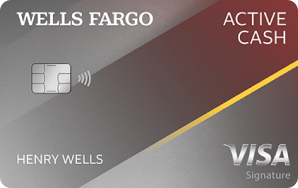
Earn unlimited 2% cash back on all purchases
Card Details
Balance Transfer Info & More
- INTRO APR OFFER: 0% intro APR on purchases and balance transfers for 15 months from account opening, then a variable APR of 20.24%, 25.24%, or 29.99%.
- Balance transfer fee: 3% for balance transfers made within 120 days, then 5% or $5, whichever is greater
- No bonus categories to track, activate, or remember
- Cash rewards earned on your card don’t expire as long as your account remains open
- Find tickets to top sports and entertainment events, book travel, make dinner reservations, and more with complimentary 24/7 Visa Signature® Concierge service.
- Benefit from up to $600 of cell phone protection against damage or theft. Subject to a $25 deductible.
Pros
- Unlimited 2% back on all purchases
- Intro APR offer
- No annual fee
Cons
- No bonus categories
- Smaller welcome offer than some cards
- Charges 3% in foreign transaction fees
The lack of an annual fee coupled with high flat-rate rewards makes this card a valuable asset to any wallet.
Best for Flat-Rate Cash Back (1.5%): 15 Month Intro APR Offer
Capital One Quicksilver Cash Rewards Credit Card
Earn 1.5% cash back on all purchases and 5% back on hotels and rental cars booked through the Capital One Travel platform.
Card Details
Balance Transfer Info & More
- INTRO APR OFFER: 0% intro APR for 15 months on purchases and balance transfers, then 19.99%-29.99% variable APR
- Balance transfer fee: 3% for the first 15 months; 4% at a promotional APR that Capital One may offer you at any other time
- No rotating categories or sign-ups required to earn cash rewards; cash back won’t expire for the life of the account, and there’s no limit to how much you can earn
- Up to 6 months of complimentary Uber One membership statement credits until 11/14/2024
- No foreign transaction fees with this card
Pros
- No annual fee
- No cap on cash back
- Intro APR offer
Cons
- Lower welcome bonus than some cards
- Lower rewards rate than some cards with specific categories
- Requires good or excellent credit
This is a solid, straightforward cash-back card for people who don’t want to pay an annual fee or activate categories, but other cards may earn more.
Best for Travel Rewards: 15 Month Intro APR Offer
Capital One VentureOne Rewards Credit Card
Earn unlimited 1.25X miles on all purchases and 5X miles on hotels and rental cars booked through Capital One Travel.
Card Details
Balance Transfer Info & More
- INTRO APR OFFER: 0% intro APR on purchases and balance transfers for 15 months, then 19.99% - 29.99% variable APR.
- Balance transfer fee: 3% for the first 15 months; 4% at a promotional APR that Capital One may offer you at any other time
- No limit to the amount of miles you can earn, and miles won’t expire for the life of the account
- Your miles can be used to get reimbursed for any travel purchase or travel bookings through Capital One Travel
- Easily transfer your miles to your choice of 15+ travel loyalty programs
Pros
- No annual fee
- Intro APR offer
- Low spending requirement for welcome offer
Cons
- High APR
- Good or excellent credit recommended
- Few travel perks
If you don’t travel a lot, this may be a good option, but unless you’re 100% set on getting a travel card without an annual fee, you’ll likely find more value elsewhere.
 COMPARE CARDS
COMPARE CARDS
Let's compare the best balance transfer cards of July 2024
 GET STARTED
GET STARTED
 Get matched with your perfect credit card in 60 seconds or less, no impact on your credit score.
GET STARTED
Get matched with your perfect credit card in 60 seconds or less, no impact on your credit score.
GET STARTED
What you need to know about balance transfers
What is a balance transfer?
Simply put, a balance transfer is where you move the balance remaining on one credit card to another. People often do this when their current credit card’s interest rate is hindering their ability to pay off their debt, so they transfer their balance to a card with a 0% balance transfer offer. Doing so gives them more time to pay off their debt before the new card’s interest sets in.
How much can you save with a balance transfer?
Consider this example:
John has a balance of $4,000 on a credit card with a 19% APR and wants to pay it off in 18 months.
Cost estimate without a balance transfer
If he keeps his debt on the 19% interest card, he’ll have to pay roughly $258 per month and will accrue an additional $628 in interest, for a total of $4,628 paid ($4,000 + $628 = $4,628).
Cost estimate with a balance transfer card
If John transferred the balance to a balance transfer card with 0% interest for 18 months and a 5% balance transfer fee, he’ll pay $200 upfront for making the transfer (5% of $4,000 = $200), making his new debt $4,200 ($4,000 + $200 = $4,200). John won’t need to pay any interest so all of his payments will go toward that $4,200 debt.
If he pays the same $258 per month he was paying before, he’ll finish paying off his debt in 17 months with no interest charges, saving $428 overall ($4,200 vs. $4,628).
Balance transfer fees
Most balance transfer credit cards, although they have a long 0% APR period, also charge upfront balance transfer fees, usually between 3% and 5% of the balance transferred.
Although the example above shows the potential savings with a balance transfer card, it’s not always the right solution for paying off debt. If you plan on paying off your debt in a short time, a balance transfer fee could end up costing you more than your initial interest rate would have.
For example, in the scenario above:
- If John was planning on paying off his $4,000 debt in 5 months on a card with 19% APR, he’d pay roughly $850 per month and would accrue $190 in interest, for $4,190 paid overall.
- Transferring the balance to a balance transfer card with a 5% fee would still charge him $200 upfront, for $4,200 paid overall, costing him an additional $10 over what he would have paid on his initial card.
How to do a credit card balance transfer
As we have now established, if you have debt on a credit card with a high interest rate, it may make sense to move that balance to a credit card with a low balance transfer interest rate.
Here are the steps to follow to do a balance transfer:
Check your current credit card for the balance, interest rate, and fees
Before deciding to transfer your credit card balance to another card, find out what your current interest rate is and calculate what your interest payments will be if you were to keep paying off your balance with your current credit card. This will help you to decide if a balance transfer card is worth it.
Find a new card with a balance transfer offer
Compare credit cards to find a card that offers a balance transfer promotional period, ideally one with 0% APR on balance transfers for several months. Check the terms and conditions to see if there are minimum requirements or hidden fees associated. Some cards require you to make the balance transfer within the first few weeks of having the card. Some cards also prohibit balance transfers between two of their cards, so it’s often best to find a card from a different issuer.
Ask your new card company to complete the balance transfer
Once you have been approved for the balance transfer credit card, you can request the balance transfer. You’ll be asked to give the account number and the balance amount on the card that you want to transfer the debt from. Sometimes this can be initiated from your account online or through the mobile app, but you may need to call the issuer’s customer service number.
Keep paying the debt on your old card until the transfer is complete
Balance transfers can take several weeks or even a month to be fully transferred. Therefore, it’s important to keep making payments to your old card until the transfer is complete. This way you can avoid any late fees or a negative impact on your credit score while you wait.
Finish paying off your balance on your new credit card
Now that the balance transfer is complete, calculate how much you need to pay each month to be able to pay off your balance before the end of your promotional APR period. Make sure to keep up with payments. If you make a late payment, this can be grounds for the card issuer to end your promotional APR early.
Don’t close your old card
If your old card doesn’t charge an annual fee, it’s usually best to keep the account open. Closing a credit card account could damage your credit score. Read more about why closing a credit card may hurt your credit.
Pros and cons of balance transfer cards
There are many reasons to consider a balance transfer card, but there are also some drawbacks. Be sure to carefully consider both sides before selecting a balance transfer card.
- Save money on interest with 0% APR card for a limited time
- Most balance transfer cards come with no annual fee
- Some balance transfer cards let you earn rewards
- Qualify for perks like extended warranties, purchase protection, and cell phone insurance
- Consolidating your debts makes it easier to keep track of your payments.
- Balance transfer offers only last for 12 to 21 months
- Balance transfer fees (usually 3% to 5%) are required
- Using a balance transfer card for spending can trap you in a cycle of debt
- Balance transfer cards are only available to consumers with good or excellent FICO scores
- Possible limits on how much you can transfer.
Reasons to get a balance transfer card
There are many reasons to pick up a balance transfer credit card, and these factors can vary from person to person. Consider the following reasons you may want to pick a card with an intro APR for balance transfers over other options.
-
You have significant credit card debt.
If you have thousands of dollars in credit card debt that you can’t seem to pay off, a balance transfer card can help by consolidating the balance of all your debts on one new credit card and allowing you to save money on interest. -
You’re currently paying high interest rates.
The average credit card interest rate is currently over 22%, but many of the best credit cards charge significantly higher rates than that. If you’re carrying a balance on a card with a high APR, qualifying for a 0% APR offer will inevitably save you money. -
You want to simplify your financial life.
Not only do balance transfer credit cards help you save money on interest, but they let you go from multiple payments down to one each month. After you consolidate the balance of your debts, keeping track of your progress becomes much easier. -
You hope to pay off credit card debt faster.
Balance transfer credit cards can help you pay down debt faster because 0% APR offers let you pay more toward the principal of your balance each month. No interest is being charged for a limited time, so every cent you pay goes toward your debt.
How to choose a balance transfer card
There are many factors to think about when deciding on a balance transfer credit card. Consider the following elements when making your choice:
Find out your credit score
Depending on your credit score, you may or may not qualify for some of the best balance transfer credit cards. Learn how to check your credit score if you don’t already know it offhand.
Think about your goals
How much time do you need, realistically, to pay off your debt? Does a balance transfer card make sense to meet your goals?
Look at rates and fees
Look at the intro APR offer, minimum and maximum transfer limits, balance transfer fees, regular APR, annual fees, and other costs you may potentially incur.
Decide on an issuer
Most of the time, you cannot transfer a balance from one card to another from the same issuing bank, so it’s usually best to get one from a different issuer. Applying for credit cards can temporarily ding your credit score, so avoid applying for more than you need.
Consider long-term value
Sometimes, the only real value a balance transfer credit card can offer is a long intro APR period, especially on cards designed specifically for balance transfers, such as the Wells Fargo Reflect. Other times, cards like the Blue Cash Preferred Card from American Express offer value past when the introductory period ends. Although the latter has a shorter 0% APR period, it also holds greater long-term value, with generous rewards on everyday purchases. Consider whether you want a card with long-term value or if you’re only looking for one to pay off your debt.
Be smart about it
Although a card with a 0% APR on balance transfers that also offers rewards may seem like a no-brainer, it’s not the best idea for everyone. Rewards credit cards also tend to have valuable sign-up bonuses that require you to spend a certain amount in a set time to earn a reward. Even though that sounds like a great thing, it can easily lead you further and further into debt, especially if you’re already having a hard time paying off your existing balance. In this case, it may be smarter to either get a card without an alluring sign-up offer or to pass on earning the bonus if the card you choose has one.
Some of our favorite balance transfer cards
Advertiser DisclosureBlue Cash Everyday® Card from American Express
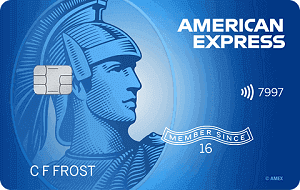
Chase Freedom Unlimited®
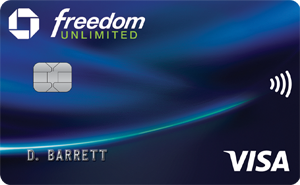
Blue Cash Preferred® Card from American Express
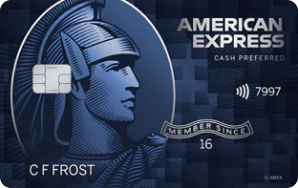
Alternatives to balance transfer credit cards
- Pay more than the minimum. Paying the minimum monthly payment due may keep you from incurring a penalty on your account, but it can also make it nearly impossible to pay off your debt promptly. You’ll keep accruing interest until you’ve finished paying off your balance, so it’s always better to pay more than the minimum due. This will help eliminate your debt more quickly and will mean paying less in interest overall.
- Utilize a credit card payoff calculator. A credit card payoff calculator can help you make a debt repayment plan by calculating various scenarios and showing you how much money you can save. This can help you feel more in control of your finances as you’re working towards becoming debt-free.
- Ask your credit card issuer to lower your interest rate. It’s possible that if your credit score has improved since you first got your credit card, you may be able to get your interest rate lowered.
- Raise your credit score. If your credit score is too low for a balance transfer card or your interest rate is too high because of having a low score, credit cards for bad credit can help you rebuild. Additionally, there are a few easy steps you can take to raise your credit score quickly.
- Get a personal loan. You may be able to get a personal loan with a lower interest rate than your credit card currently charges. Some personal loans are even designed specifically for debt consolidation. Note, however, that if your credit score or credit history is less than ideal, you may need a co-signer to get approved for a loan.
How we selected our top balance transfer credit cards
To find the best balance transfer cards, we looked at factors such as introductory interest rates, the length of intro APR offers, balance transfer fees, transaction fees, and rewards (cards with gas rewards, grocery rewards, etc.) We also looked at credit limit minimums, creditor rules, fine print, third-party cardholder perks like travel insurance, credit card balance requirements, and other factors. Ultimately, we chose cards that can offer you the most value.
Related resources
- What is a good APR?
- How to check your credit score
- What is credit utilization?
- How do credit cards work?
- Best student credit cards
- Best 0% APR credit cards
• • • • •
For rates and fees of the Blue Cash Everyday® Card from American Express, please visit this page.
For rates and fees of the Blue Cash Preferred® Card from American Express, please visit this page.
 COMPARE CARDS
COMPARE CARDS
 Consolidate your debt and save on interest with a balance transfer card.
COMPARE CARDS
Consolidate your debt and save on interest with a balance transfer card.
COMPARE CARDS
Best balance transfer credit cards FAQ
Which credit card has the longest balance transfer offer?
Currently, the Wells Fargo Reflect card has one of the longest intro APR offers in the industry.
What is balance transfer on a credit card?
A balance transfer takes place when you move debt from one or more credit cards to a new balance transfer credit card, usually to save money on interest and fees.
Do balance transfers hurt your credit score?
Balance transfers will not hurt your credit score, but applying for a new credit card results in a hard inquiry that temporarily dings your credit score. Performing a balance transfer with an existing credit card will have no impact.
Is balance transfer a good idea for credit card?
Balance transfers can be a good idea if you have a goal in mind and you are disciplined enough to focus on becoming debt-free. To get the most out of a balance transfer, you should strive to pay off as much of your credit card balance as you can as quickly as you can. In the meantime, stop using credit cards so you don’t rack up any more credit card debt.
Can you get a balance transfer card with bad credit?
It is possible to get a balance transfer credit card with bad credit, but it isn’t always recommended. Balance transfer cards can help you to save money and stop the cycle of debt with their 0% introductory APR and potentially lower interest rates.
If you have a plan on how to pay off your balance, a balance transfer card may be helpful. However, if you aren’t serious about repayment, you’re simply moving your debt from one place to another.
What happens if you don't pay off a balance transfer?
Balance transfer cards can give you extra time to pay off your debt before interest sets in, but the introductory period doesn’t last forever. When the offer ends, you’ll start accruing interest on your remaining balance, at your card’s ongoing APR.
How long does a balance transfer take?
Typically, balance transfers take about 2 weeks to fully complete. Here’s the average time you can expect to wait, based on the credit card issuer:
- American Express: 5 to 7 days
- Capital One: Up to 14 days
- Chase: Up to 21 days
- Discover: 7 to 10 days
- Wells Fargo: Up to 14 days
If you’ve been waiting for longer than a few weeks, your transfer is likely delayed for some reason. In that case, it’s best to contact the credit card company to find out what’s keeping the transfer from going through.
Do you have to transfer your full balance when doing a balance transfer?
No, you can choose how much of your balance you would like to transfer, whether all of it or only part of it.
What does “request held” mean on a balance transfer?
“Request held” means that the issuer will hold your transfer request until they can confirm that you have enough credit available to you on your new card. If you try to transfer more than your credit limit allows, the issuer will deny your request.
How much will it cost in fees to transfer a $1000 balance to a credit card?
Balance transfer fees are typically 3% to 5% of the amount transferred, which works out to between $30 and $50 on a $1,000 balance.
What should I do if I can't pay off my balance transfer by the end of the intro period?
If your balance transfer offer is about to end and you still have debt, you have a few options.
- Make a large payment to lower or eradicate the rest of your balance.
- Restructure your payment plan to pay off the rest of your balance quickly.
- Transfer the balance to another 0% APR or low interest card.
- Consider getting a debt consolidation loan.
* Opinions expressed here are those of the LA Times Compare Cards Team and have not been reviewed or approved by any advertiser or entities included within this content. See our editorial policy for more details.
All products or services are presented in this content without warranty. The information, including card details such as rates and fees, is accurate at the time of publish. Please visit each bank's website directly for the most current information.


